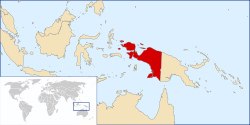TPN-OPM BERTANGGUNGJAWAB ATAS PENEMBAKAN TERHADAP 13 ANGGOTA TNI DI SINAK DAN 2 ANGGOTA TNI DI TINGGINAMBUT PUNCAK JAYA PAPUA
 Papua - TPN-OPM Tembak 13 Anggota TNI Pada Kamis 21 Februari 2013 di Sinak, dan Dua Anggota TNI di Tingginambut, Puncak Jaya Papua
Papua - TPN-OPM Tembak 13 Anggota TNI Pada Kamis 21 Februari 2013 di Sinak, dan Dua Anggota TNI di Tingginambut, Puncak Jaya Papua
Tentara Pembebasan Nasional Papua Barat-Organisasi Papua Merdeka
(TPN-OPM), Menembak mati 13 Anggota TNI dari Koranmil Sinak, Kodim
1714/Puncak Jaya di Kampung Tanggulinik, Distrik Sinak, Kabupaten Puncak
Jaya, (Kamis 21/2/2013) pukul 10.30 wp kemarin.
Tigabelas anggota TNI yang berhasil ditembak mati leh TPN di Sinak
adalah saat menuju Bandara Sinak untuk mengambil radio dari Nabire.
Tigabelas TNI yang tewas diantaranya: Sertu Udin, Sertu Frans, Sertu
Romadhon, Pratu Mustofa, Sertu Edy, Praka Jojon, Praka Wempi dan enam
lainnya belum diketahui identitas.
Beberapa Surat kabar maupun Tv dikabarkan bahwa TPN-OPM tembak 8 anggota
TNI di Puncak Jaya adalah penipuan. Hal dikatakan oleh salah satu
anggota TPN saat melaporkan peristiwa tersebut kepada admin WPNLA, dari
dataran tinggi setelah ia mendapatkan signal jaringan telkomsel, melalui
telepon selulernya. Bahwa “kami tembak anggota TNI di Sinak 13 orang
dan di Tingginambut 2 anggota TNI”. Ditanya terkait, penembakan di
Sinak dan di Tingginambut atas Komando siapa? “ ya kami tembak TNI di
Sinak dan di Tingginambut atas perintah Panglima Tinggi TPN-OPM Gen.
Goliath Tabuni” kata anggota TPN yang namanya tidak mau dipublikasi itu.
Dua anggota TNI yang dibakarkan ditembak oleh TPN-OPM di distrik
Tingginambut Kampung Guragi, Kabupaten Punjak Jaya pada (Kamis
22/2/2013), pukul 09.00 wp adalah Satgas TNI atas nama Pratu Wahyu Bowo
tewas dengan luka tembak di bagian dada dan leher. Satunya, korban
luka-luka Danpos Satgas atas nama Lettu Inf Reza yang tertembak di
lengan bagian kiri.
Informasi terkait juga dilaporkan oleh salah satu warga di Mulia kota
Kabupaten Puncak Jaya. Ditanya, bagaimana proses evakuasi mayat anggota
TNI? “Korban dari Tingginambut sedang dirawat RS di Mulia. Korban luka
para masih koma, pasti akan meninggal. Pagi ini 13 kantong mayat dikirim
dari Sinak ke Mulia untuk dievakuasi ke Jayapura, ujarnya.
Tambahan dari sumber yang diwawancarai Admin WPNLA via telpon seluler.
mengatakan bahwa situasi sementara di Mulia “ saat inipun kami tidak
aman di kota disini kami takut, lebih para lagi masyarakat di
Tingginambut dan Sinak mereka semua mengungsi ke hutan. Karena, TNI,
Brimob sedang kejar TPN-OPM, jadi semua masyarakat takut lari ke hutan”,
kata seorang warga di Mulia.
Selanjutnya, Salah satu anggota TPN yang melaporkan peristiwa kepada
Admin WPNLA mengatakan bahwa, “Komandan Murib bilang kalau anggota TNI
dan BRIMOB berusaha kejar kami, berarti kami siap tembak dan pasukan
TPN-OPM tidak akan mundur, TPN akan bertahan terus dan lawan TNI/POLRI”,
pungkasnya.
Kata sumber, “Komandan Murib” artinya yang mengatakan “Komandan Operasi
Lekagak Gemanus Telenggen. Tambah sumber lagi, “pagi ini kami tembak
pilot helicopter dari gunung”. Helicopter yang kami tembak adalah milik
TNI, saat melakukan evakuasi korban tersebut.
Namun karena, TPN-OPM tembak Pilot Helikopter, sehingga tidak jadi
evakuasi melalui udarah menggunakan helicopter, maka helicopter tersebut
kembali ke Mulia.
Penembakan 15 Anggota TNI kali ini merupakan, Sikap Panglima Tinggi
TPN-OPM Gen.Goliath Tabuni, bahwa berdasarkan dirinya dilantik menjadi
Panglima Tinggi TPN-OPM pada 11 Desember 2012 di Tingginambut.
Dalam pidatonya “ saya diangkat sebagai panglima tinggi TPN-OPM sesuai
hasil Konferensi Tingkat Tinggi TPN-OPM di Biak pada 1-5 Mei 2012, dan
siap memimpin TPN-OPM serta siap melaksanakan Revolusi Tahapan ataupun
Revolusi Total guna memperoleh Hak Politik Menentukan Nasib Sendiri
(Self Determination) bagi Bangsa dan Rakyat Papua Barat.
Sesuai Resolusi KTT TPN-OPM di Biak, saya sebagai Panglima Tinggi
TPN-OPM siap bertanggungjawab dan Siap lakukan revolusi tahapan dan akan
dilanjutkan dengan Revolusi total, sambil mengatur dan membenahi
structural TPN-OPM sesuai standar Internasional.
Notes:
TPN-OPM anggap bahwa semua orang Indonesia yang telah dan sedang cari
makan dan mencuri kekayaan orang asli Papua adalah penjajah dan Musuh
Rakyat bangsa Papua Barat. Dengan dasar itu, TPN-OPM siap membersihkan
secara menyeluruh dari tanah leluhur bangsa Papua.
TPN-OPM juga memperingatkan kepada orang Melayu Indonesia yang ada di
Papua segera gulung Tikat dan pulang kampung, karena TPN-OPM siap
melaksanakan Revolusi Tahapan dan Revolusi Total.












